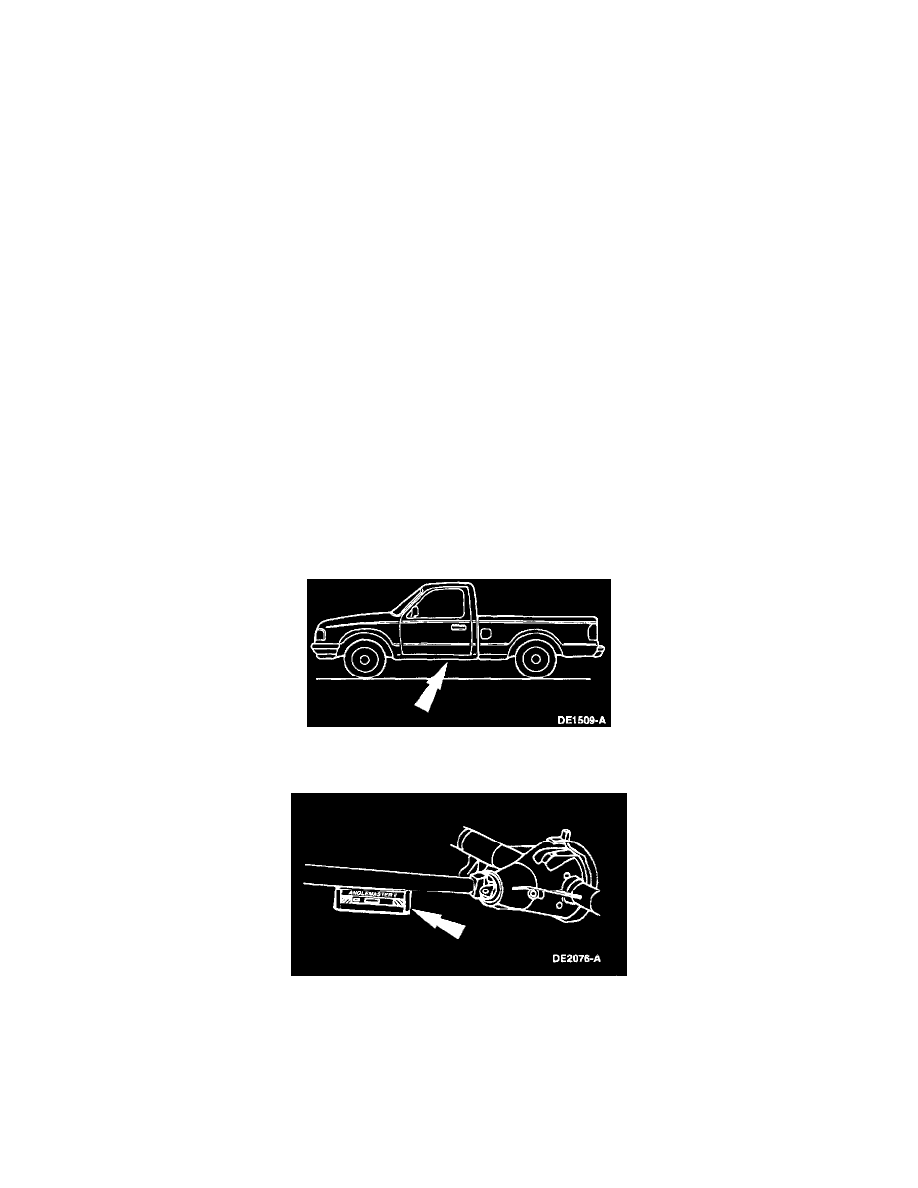Ranger 2WD V6-3.0L VIN U (1998)

knock will be less because the axle shaft speed is slower than the driveshaft.
NOTE: Measure the end play with a Dial Indicator with Bracketry and not by feel.
CLUNK
Clunk is a metallic noise heard when the automatic transmission is engaged in REVERSE or DRIVE. The noise may also occur when throttle is
applied or released. It is caused by backlash somewhere in the driveline or loose suspension components; it is felt or heard in the axle. Refer to Total
Backlash Check. See: Total Backlash Check
Additionally, clunk may be heard upon initial drive-away. This occurs as engine torque shifts vehicle weight, forcing changes in driveline angles,
preventing the driveshaft slip-yoke from sliding on the output shaft. To correct for this condition, lubricate the slip-yoke splines.
Axle Shaft Noise
Axle shaft noise is similar to gear noise and differential pinion bearing whine. Axle shaft bearing noise will usually distinguish itself from gear noise
by occurring in all driving modes (drive, coast, and float), and will persist with the transmission in NEUTRAL while the vehicle is moving at the
speed in which the concern is occurring. If the vehicle makes this noise, remove the suspect axle shaft, replace the bearing, and install a new axle seal.
Re-evaluate the vehicle for noise before removing any internal components.
Bearing Rumble
Bearing rumble sounds like marbles being tumbled. This condition is usually caused by a worn/damaged wheel bearing. The lower pitch is because the
wheel bearing turns at only about one-third of the driveshaft speed. Wheel bearing noise also may be high-pitched, similar to gear noise, but will be
evident in all four driving modes.
Driveshaft Angle Inspection
CAUTION: Prior to checking driveline angularity, inspect the U-joints for proper operation.
1. Raise and support the vehicle.
-
Normalize the suspension.
NOTE: Use a drive-on hoist or back onto a front end alignment rack.
2. With the vehicle empty and all fluids full, measure where indicated and verify that the curb position ride height angle is within specification.
-
If out of specification, inspect the suspension and chassis.
3. Place the Anglemaster II Driveline Inclinometer flush against the driveshaft.
4. Record the reading and subtract the angle of the surface supporting the vehicle to obtain the correct driveshaft angle.
Engine Angle Inspection
